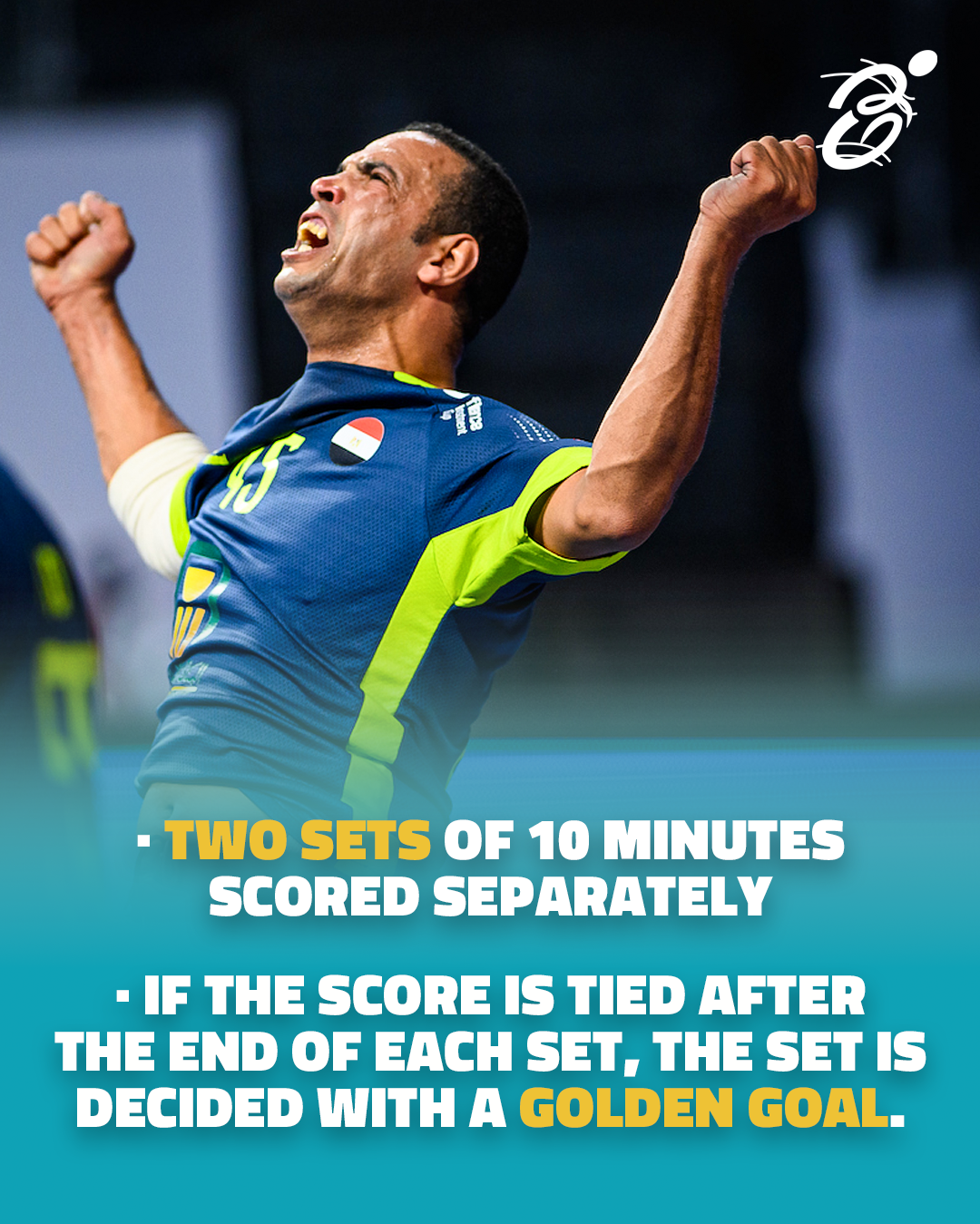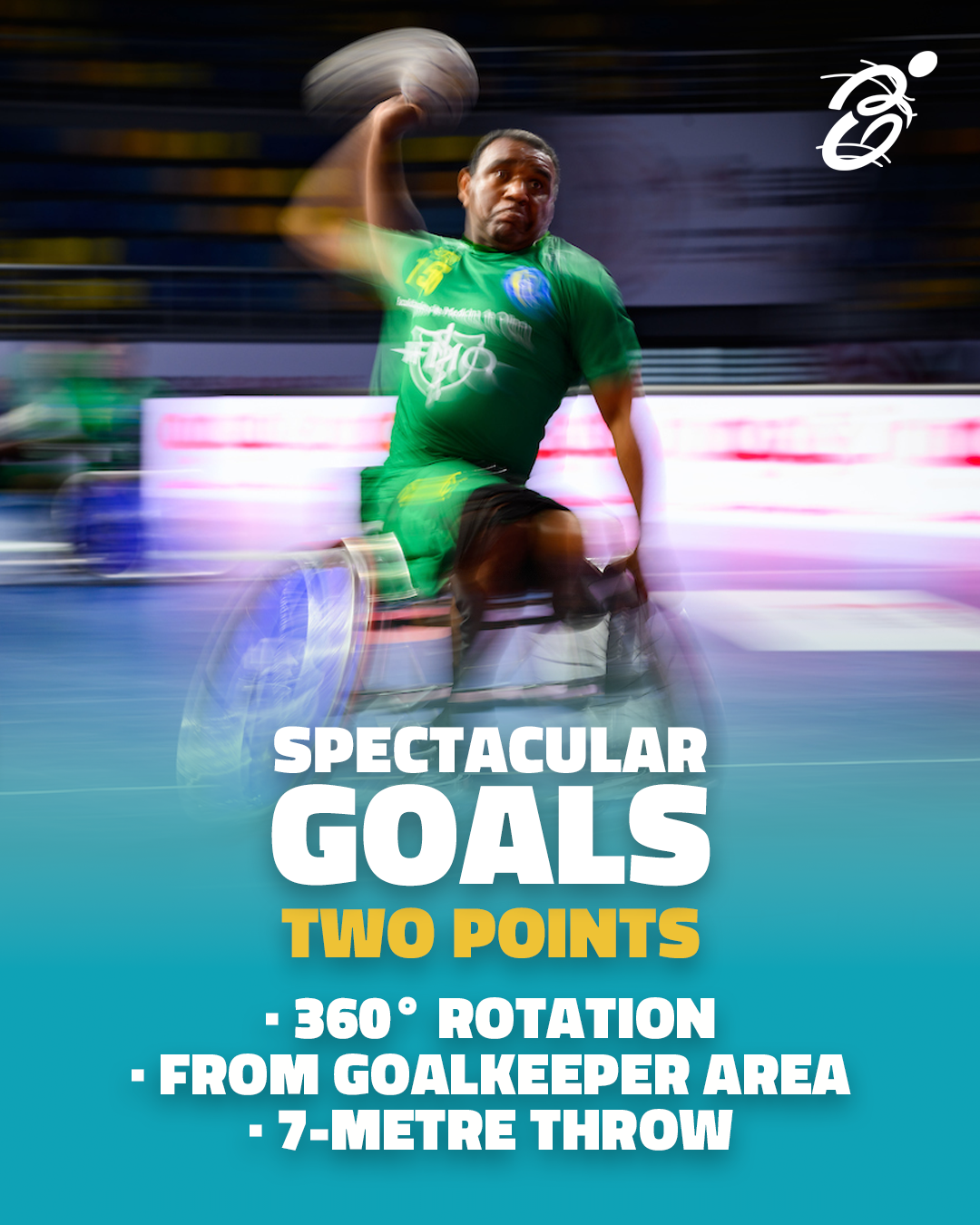Ready to roll: Wheelchair handball rules explained before the 3rd IHF Wheelchair Handball World Championship
12 Sep. 2024

Wheelchair handball has been getting more and more popular throughout the world over the past two decades and the strides made by both the International Handball Federation (IHF) and the National Federations have gradually improved the level of the game and the interest around it.
The first edition of the IHF Four-a-Side Wheelchair Handball World Championship, which took place in Egypt between 22 and 25 September 2022, was a resounding success, followed by the World & European Wheelchair Handball Championship (six-a-side), organised jointly by the International Handball Federation, the European Handball Federation and the Portuguese Handball Federation between 18 and 20 November 2022.
The development of the sport will be higlighted once again this September, as the third edition of the IHF Wheelchair Handball World Championship will take place once again in Egypt, from 16 to 21 September 2024.
Two teams from Europe, Asia and South and Central America, plus one each from Africa and the North America and Caribbean will be vying for the coveted trophy, as several powerhouses return, while other sides make their debut.
The reigning champions of the IHF Four-a-Side Wheelchair Handball World Championship, Brazil, as well as the reigning champions of the World and European Wheelchair Handball Championship Six-a-Side, Portugal, will be at the start.
Hosts Egypt, which finished second at the 2022 IHF Four-a-Side Wheelchair Handball World Championship, will return to this edition of the competition. France, an up and coming team in wheelchair handball, are also part of the line-up, as well as two Asian representatives, Japan and India. Joining Brazil from the South and Central America are Chile, which, alongside India, have featured at the 2022 IHF Four-a-Side Wheelchair Handball World Championship.
A team which will make its debut at the 3rd IHF Wheelchair Handball World Championship are the United States of America, which have been awarded a wild card, with teams from five continents now taking part in the competition for the first time in history.
But what are the main rules for the Four-a-Side Wheelchair Handball? Below, you will find everything you need to know about the discipline, which was strongly influenced by the rules of beach handball – in contrast to Six-a-Side Wheelchair Handball, which is closer to indoor handball.
How many players are on the court?
Wheelchair handball four-a-side is practised by two teams of four players. The aim of each team is to score goals and prevent the other team from scoring. With less players on the court, the game, which is influenced by both indoor handball and beach handball, is more attractive, has a faster pace and delivers an excellent experience to both players and fans.
Any player present on the court may act as a goalkeeper at any time, but only one player may enter and remain in his own goalkeeper area at the same time. Therefore, the goalkeeper does not wear a special goalkeeper shirt but the same shirt as the rest of the team.
As the 3rd IHF Wheelchair Handball Championship is a mixed competition, at least one female player per team must be on the court at any time, while at least two players out of the final roster of maximum 10 must be female.
In case no female player is able to play (due to injuries or punishments) the team concerned will be reduced by one player for the rest of the match.
Players shall be minimum 15 years old; a written permission from the parents for players aged 15-18 years shall be presented prior to the tournament.

How is the game structured?
Matches consist of two sets of 10 minutes, which are scored separately. The half-time break is five minutes long. If the score is tied at the end of a set, the winner shall be decided by golden goal.
If both sets are won by the same team, this team shall be the overall winner, with a score of 2:0. If each team wins one set, the teams will play a third set (tiebreaker) of five minutes. If at the end of the third set the match remains tied, the winner will be determined by a shoot-out. If a match is decided by tiebreaker, the overall result shall be 2:1 for the team that has won the tiebreaker.
Each team has the right to receive a one-minute team time-out in each set of the regular playing time. The teams must not be granted time-outs in the third set (tiebreaker). The team requesting a team time-out must be in the possession of the ball.
What is the classification?
To ensure the matching of the teams – i.e., the motoric capacity of a team must match the motoric capacity of the opponents – each player undergoes a series of tests conducted on two separate days before the start of Egypt 2022.
This is commonly known as “classification”, which consists of three parts. The first one was done before the teams arrive in Egypt, a pre-event eligibility check via a Medical Diagnostic Form, signed by a certified medical doctor.
The main parts of the classification for this competition have been forward flexions, rotations, lateral flexion and, after all the exams have been completed, the assessment is done, a profile for the player is made and each player is scored.
A colour code will then be used to identify the class of each player. A sticker with the code and the player’s number will be placed on the back of the wheelchair. There are four classes:
- Class 1: green (1 point)
- Class 2: yellow (2 points)
- Class 3: blue (3 points)
- Class 4: red (4 points)
The Class 4 players are the ones with the least motoric problems, the highest motoric capacity. For each team in the competition, there cannot be players with more than 12 points on the court at the same time.
Are there any changes to the court?
The court has the same dimensions as indoor handball. The internal dimensions of the goals shall be 3m x 1.7m. The catch net in the goals shall be removed (or fixed to the goal net) in order to avoid entangling with the wheelchair.

Goals or points?
A goal is scored when the entire ball has crossed the entire width of the goal line, provided that no violation of the rules has been committed by the shooter or a teammate before or during the shot. However, there are special circumstances for Four-a-Side Wheelchair Handball.
Two points are awarded for creative or spectacular goals (e.g., a player throws the ball and scores a goal immediately after having made a 360º turn with their wheelchair or when the goalkeeper scored from his own area). During the shoot-out, creative or spectacular goals are also awarded two points.
If a goal is scored by a 7-metre throw, two points are awarded as well.
Are there any suspensions or disqualifications?
Yes, both. It is not permitted to
- pull or hit the ball out of the hands of the opponent;
- block the opponent with arms, hands, legs, wheelchair or to use any part of the body to displace him or push him away; this includes a dangerous use of the elbow, both as a starting position and in motion;
- hold an opponent (wheelchair, body, or uniform), even if he/she remains free to continue the play;
- endanger an opponent.
Fouls, where the action is mainly or exclusively aimed at the body of the opponent, must lead to a personal punishment. This means that, in addition to a free throw or 7-metre throw, at least the foul is to be punished progressively, beginning with suspensions and then disqualification.
A player who is attacking an opponent in a way that is dangerous to his health is to be disqualified.

Different balls?
Resin is not allowed in wheelchair handball and, therefore, the balls used for official IHF tournaments shall be in compliance with the provisions of the IHF Ball Regulations, specifically regarding handballs played without resin.
Special provisions?
There is only one team time-out in each of the first two sets of the match, no team time-out is available in the third set.

